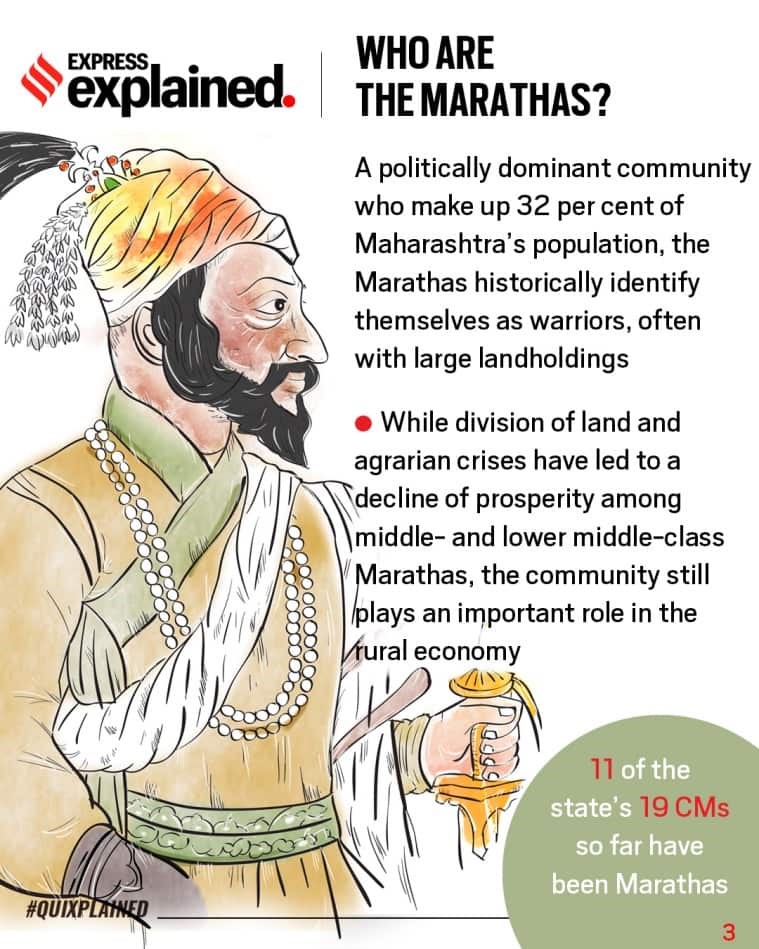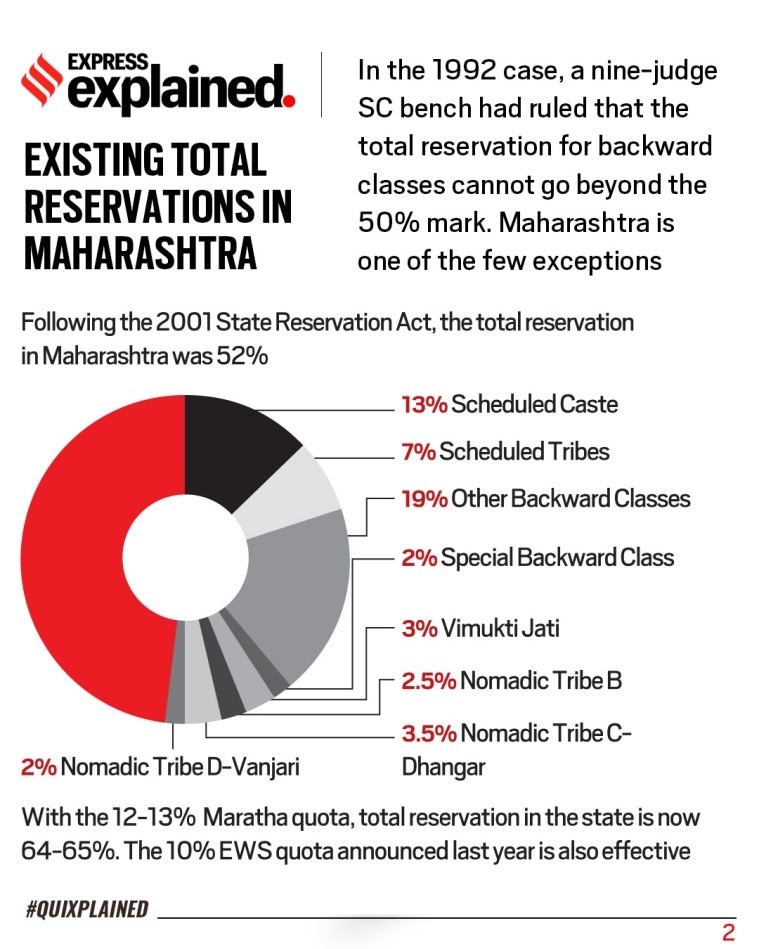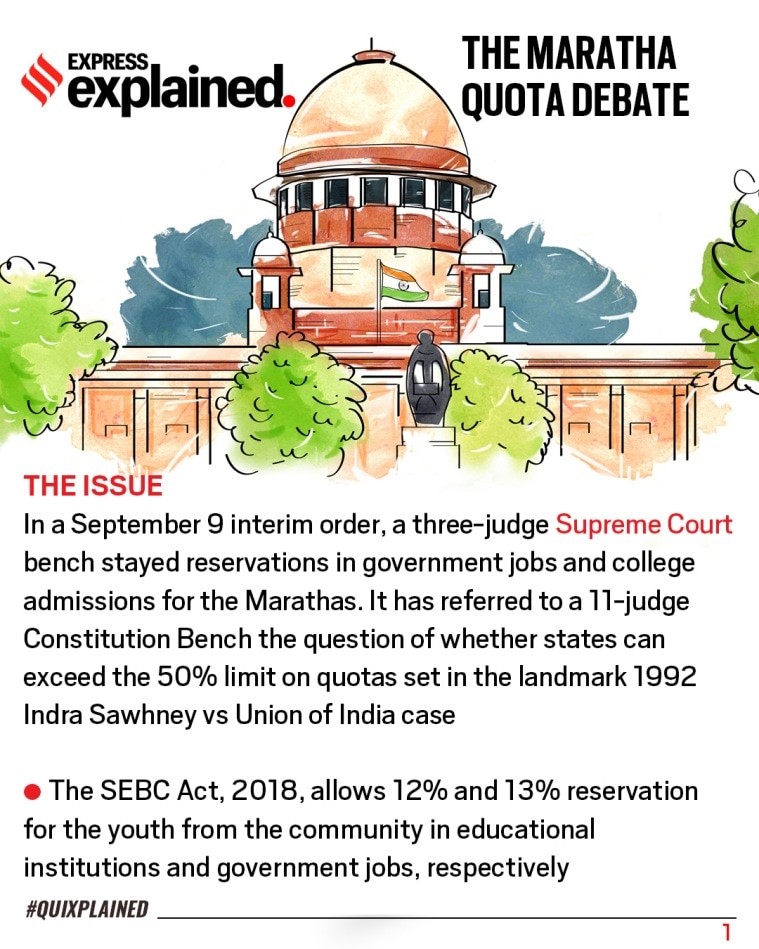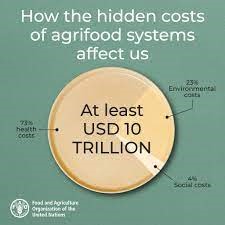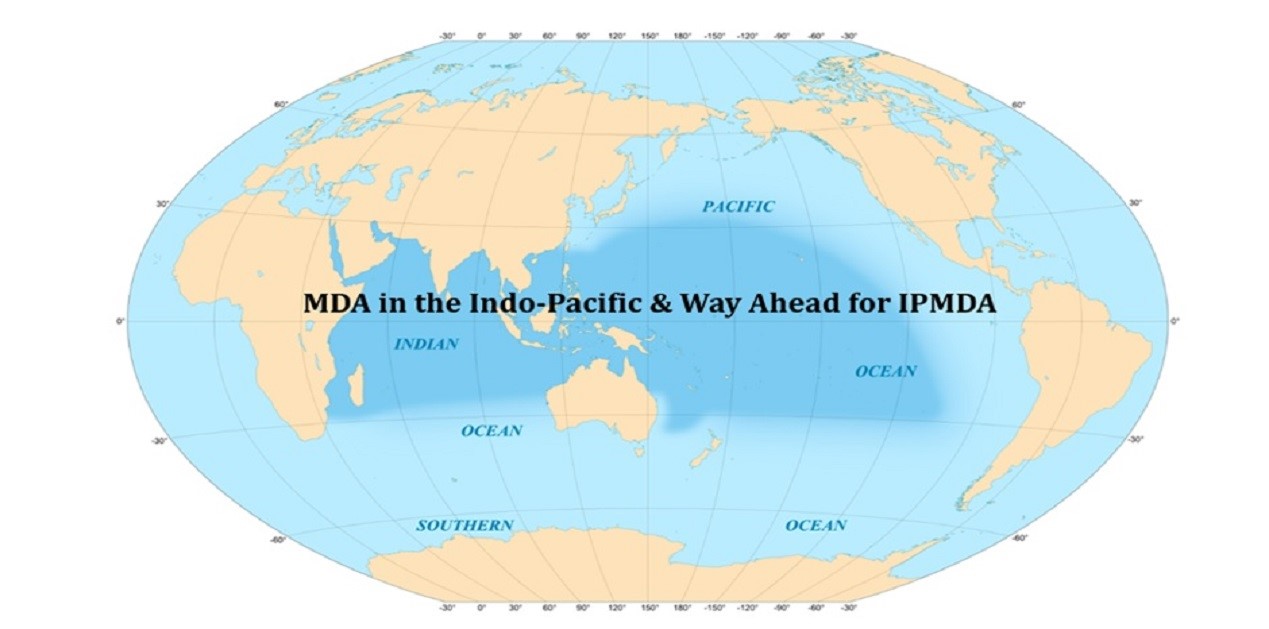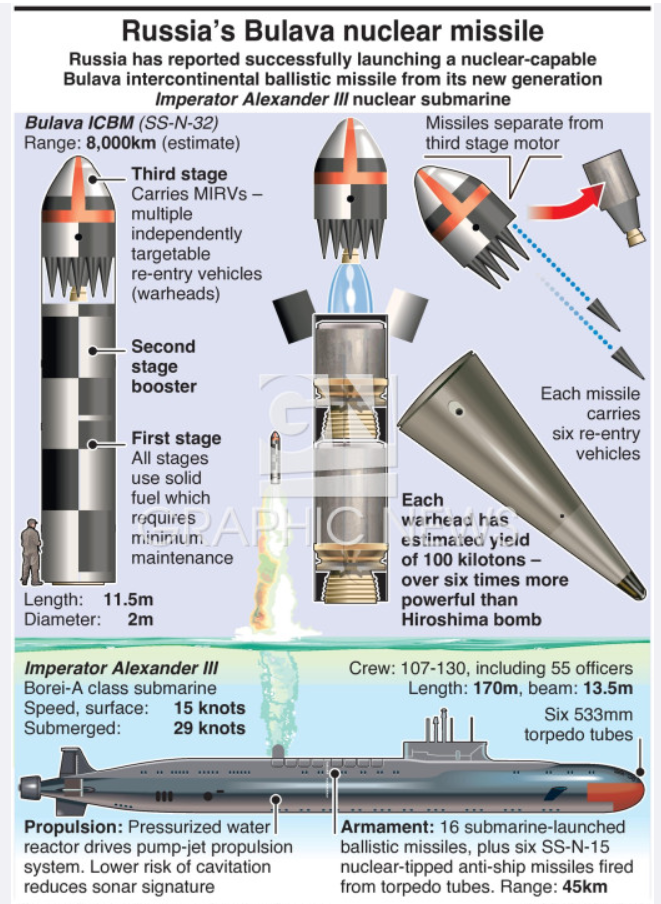- Maratha Reservation
- The State of Food and Agriculture-2023
- Indo-Pacific Maritime Domain Awareness (IPMDA) initiative
- BULAVA BALLISTIC MISSILE
Maratha Reservation
Understanding Affirmative Action in India
- Affirmative action in India involves the allocation of reserved seats in government positions, educational institutions, and legislatures for specific segments of the population.
- Initially, the original Indian Constitution only outlined reservations for legislative positions, limited to a decade, as stipulated in Article 334.
- Subsequent constitutional amendments extended the duration of these reservations for legislative representation.
Rationale for Reservations in India
- Addressing Historical Injustice and Discrimination: Reservations serve as a mechanism to counteract the historical discrimination and oppression faced by certain marginalized groups.
- Affirmative Action for Upliftment: These policies, often referred to as affirmative action, aid in the advancement of underprivileged sections of society.
- Rectifying Past Inequities: Reservations aim to correct the historical injustices experienced by lower-caste individuals in India and level the playing field for those who lacked access to wealth and resources for generations.
- Promoting Meritocracy and Equality: To establish a merit-based society grounded in fairness, it is essential to ensure that all individuals start on an equal footing before their merits are evaluated, thus guaranteeing impartial assessments.
Who Are the Marathas?
- The Marathas encompass a diverse array of castes, including farmers and landowners, constituting around 33 percent of Maharashtra’s population.
- It is crucial to note that not all Marathi speakers are part of the Maratha community.
- Despite facing challenges related to land distribution and agricultural issues, the middle and lower-middle-class Marathas have experienced declining prosperity, though they continue to play a significant role in the rural economy.
The Maratha Reservation Demand
- The Maratha community has been advocating for reservations in government jobs and educational institutions for the past three decades, with this demand becoming a pivotal issue in the state’s political landscape.
- In 2014, the state government introduced an ordinance granting a 16% reservation to Marathas in government employment and educational opportunities based on the recommendations of the Narayan Rane Committee.
Role of the Maharashtra State Backward Class Commission (MSBCC)
- Under the leadership of M G Gaikwad, the Maharashtra State Backward Class Commission (MSBCC), composed of 11 members, conducted an extensive survey covering nearly 45,000 families in two villages from each of the 355 talukas with over 50% Maratha population.
- The survey, concluded on November 15, 2018, confirmed the social, economic, and educational disadvantages faced by the Maratha community.
Enactment of the Socially and Educationally Backward Class (SEBC) Act
Building upon the findings of the Maharashtra State Backward Class Commission (MSBCC) in 2018, the government approved the provision of reservations for Marathas under a unique category known as the Socially and Educationally Backward Class (SEBC) Act.
The Supreme Court’s Stance on Maratha Reservation
- The Supreme Court rejected the Maratha reservation, citing a lack of “exceptional circumstances” or an “extraordinary situation” in Maharashtra that justified exceeding the 50% cap on reservations.
- The Court invalidated the conclusions of the Gaikwad Commission and overturned the Bombay High Court’s validation of the Socially and Educationally Backward Class (SEBC) Act, asserting that a distinct reservation for the Maratha community contravened the principles enshrined in Articles 14 (Right to Equality) and Article 21 (Due Process of Law).
The Indira Sawhney Judgment (Mandal Commission Case)
- In the Indira Sawhney case, also known as the Mandal Commission case, the Supreme Court established key points, including the acceptance of caste-based considerations for identifying “Backward Classes of the Citizens,” upholding a 27% quota for backward classes, and the limitation of reservations to initial appointments.
Supreme Court’s EWS Verdict and the Current Maratha Reservation Situation
- In November 2022, the Supreme Court upheld the 10 percent quota for the Economically Weaker Sections (EWS) and suggested that the 50% ceiling limit on reservations was not “inflexible nor inviolable for all times to come.”
- To address the ongoing Maratha reservation issue, the state government proposed the utilization of the EWS quota for economically disadvantaged Marathas and the formation of a dedicated panel to assess the community’s “backwardness.”
Conclusion
While reservation policies aim to empower marginalized and economically challenged segments of society, they must be applied judiciously to prevent causing social division and resentment.
Balancing justice for the disadvantaged, equity for the more privileged, and administrative efficiency requires careful policymaking and political will to ensure the sustainable progress of the nation.
The State of Food and Agriculture-2023
Introduction
In a recent report, it has been revealed that unhealthy diets, particularly those rich in ultra-processed foods, fats, and sugars, incur an annual hidden cost exceeding $7 trillion.
- This substantial economic burden is felt globally and has profound repercussions for both health and the environment.
Some key findings and recommendations from the report include:
- Hidden Costs of Unhealthy Diets:
- Unhealthy dietary choices, encompassing the consumption of ultra-processed foods, fats, and sugars, result in global economic losses surpassing $7 trillion each year.
- These diets contribute to the prevalence of obesity, non-communicable diseases, and reduced labor productivity.
- The impact is more significant in high- and upper-middle-income nations.
- Agrifood Systems Costs:
- Present agrifood systems impose concealed costs amounting to over $10 trillion on an annual basis, approximately 10% of the global GDP.
- A comprehensive study conducted by the Food and Agriculture Organization (FAO) analyzed 154 countries.
- These costs are interconnected with the repercussions of unhealthy diets, among other factors.
- Rural and Urban Consumption Patterns:
- The consumption of highly processed foods is on the rise in peri-urban and rural areas, driven by factors like urbanization, evolving lifestyles, and employment trends.
- Research challenges the conventional belief that urban and rural areas have distinct consumption patterns, as the diffusion of processed foods is prevalent in both settings.
- In high-food-budget countries, processed foods constitute around 29% of total food consumption, whereas in low-food-budget countries, this figure stands at 25%.
- Global Food Insecurity:
- The prevalence of moderate to severe food insecurity remained unchanged worldwide in 2022 for the second consecutive year.
- In 2022, roughly 29.6% of the global population, equivalent to 2.4 billion people, experienced moderate or severe food insecurity.
- Severe food insecurity affected 11.3% of the world’s population, or approximately 900 million individuals.
- Hunger and Undernourishment:
- An estimated 691-783 million people faced hunger in 2022, reflecting an increase of 122 million people compared to 2019, prior to the global pandemic.
- The report projects that nearly 600 million people will suffer from chronic undernourishment by 2030.
- South Asian Countries and India:
- Among South Asian nations, India experienced the third-highest prevalence of undernourishment, affecting 233.9 million people.
- The percentage of undernourished individuals in India decreased from 21.4% in 2004-06 to 16.6% in 2020-22.
- Hidden Costs by Income Level:
- Low-income countries bear the heaviest burden of hidden costs stemming from agrifood systems, representing over 25% of their GDP.
- Middle-income countries face a burden of less than 12%, while high-income countries incur less than 8% of their GDP in hidden costs.
- Recommendations:
- The report calls for more frequent and detailed analysis of the genuine costs associated with agrifood systems.
- It advocates for the adoption of true cost accounting and the implementation of mitigation measures by both governments and the private sector.
True cost accounting has the potential to address issues such as climate change, poverty, inequality, and food security, leading to a transformation of agrifood systems accordingly.
Indo-Pacific Maritime Domain Awareness (IPMDA) initiative
Introduction:
- In a recent address to the fourth edition of the Goa Maritime Conclave, the Chief of Naval Staff emphasized the significance of the Indo-Pacific Maritime Domain Awareness (IPMDA) initiative in safeguarding the security and stability of the Indian Ocean Region (IOR).
- The Indo-Pacific Maritime Domain Awareness (IPMDA) initiative, introduced during the 2022 Quad Leaders’ Summit in Tokyo, is a technology and training program aimed at bolstering maritime domain awareness in the Indo-Pacific area and enhancing transparency in its critical waterways.
- The Quad Leaders, in their announcement, expressed their commitment to advancing maritime domain awareness in the Indo-Pacific region, recognizing its fundamental role in ensuring stability and prosperity.
- The primary objective of IPMDA is to leverage cutting-edge technology, including the collection of commercial satellite radio frequency data, to offer real-time information on activities taking place in the maritime zones of Southeast Asia, the Indian Ocean region, and the Pacific to their partner countries.
- Under this initiative, the Quad has initiated regional pilot projects to provide radio frequency data to maritime agencies in Southeast Asia, the Indian Ocean region, and the Pacific.
- It’s worth noting that India’s approach to IPMDA aligns with the “Security and Growth for All in the Region” (SAGAR) initiative launched by the Indian government in 2015.
The objectives of the IPMDA initiative encompass two key areas:
- Tracking of Dark Shipping: The International Maritime Organization (IMO) mandates ships with a displacement of over 300 tons engaged in international voyages (and cargo ships over 500 tons even if not involved in international voyages) to be equipped with an Automatic Identification System (AIS).
- This system facilitates vessel identification and tracking through satellite technology.
- Originally designed for collision avoidance, AIS also supports national merchant and fishing fleet monitoring, cargo tracking, infrastructure protection, search and rescue operations, and exclusive economic zone (EEZ) security.
- IUU Fishing: China is a significant contributor to the overexploitation of the world’s oceans for fish.
- The IPMDA primarily focuses on the Indian Ocean and collaborates with countries like India, Bangladesh, Myanmar, Indonesia, and Thailand, which already possess reasonable surveillance and response capabilities in their maritime zones.
- However, the primary beneficiaries of the IPMDA are the smaller island nations in the Central and Western Indian Ocean, which require greater assistance.
Extending the benefits of the initiative to these smaller island nations will be a critical challenge for India.
BULAVA BALLISTIC MISSILE
Context:
- In recent news, Russia has successfully conducted a test launch of the Bulava ballistic missile, which is designed for carrying nuclear warheads.
- The Bulava Ballistic Missile, also known as the Russian submarine-launched Intercontinental Ballistic Missile (ICBM), has been in development since 1998.
- It had its first powered flight test in September 2005, followed by the first submerged test launch in December of the same year.
- This missile is intended to be deployed on Russia’s Borey-class ballistic missile submarines (SSBNs).
Key features of the Bulava missile
- Include a length of 12-13.5 meters, a diameter of approximately 2.0 meters, and a launch weight of 36,800 kilograms.
- It is a three-stage solid-fuel missile with the capability to carry multiple warheads, each designed to target different objectives.
- It can accommodate up to six Multiple Independent Re-entry Vehicles (MIRVs), which possess the ability to maneuver during flight and retarget to evade enemy air defenses.
- The missile is reported to have an accuracy of 350 meters.
Ballistic Missile
- A ballistic missile is a rocket-propelled, self-guided strategic weapon system that follows a ballistic trajectory from its launch site to a predetermined destination.
- Initially, ballistic missiles are propelled by one or more rocket stages, and they follow an unpowered trajectory that rises in an arched path before descending to reach their intended target.
- These missiles have the capacity to transport both nuclear and conventional warheads.

